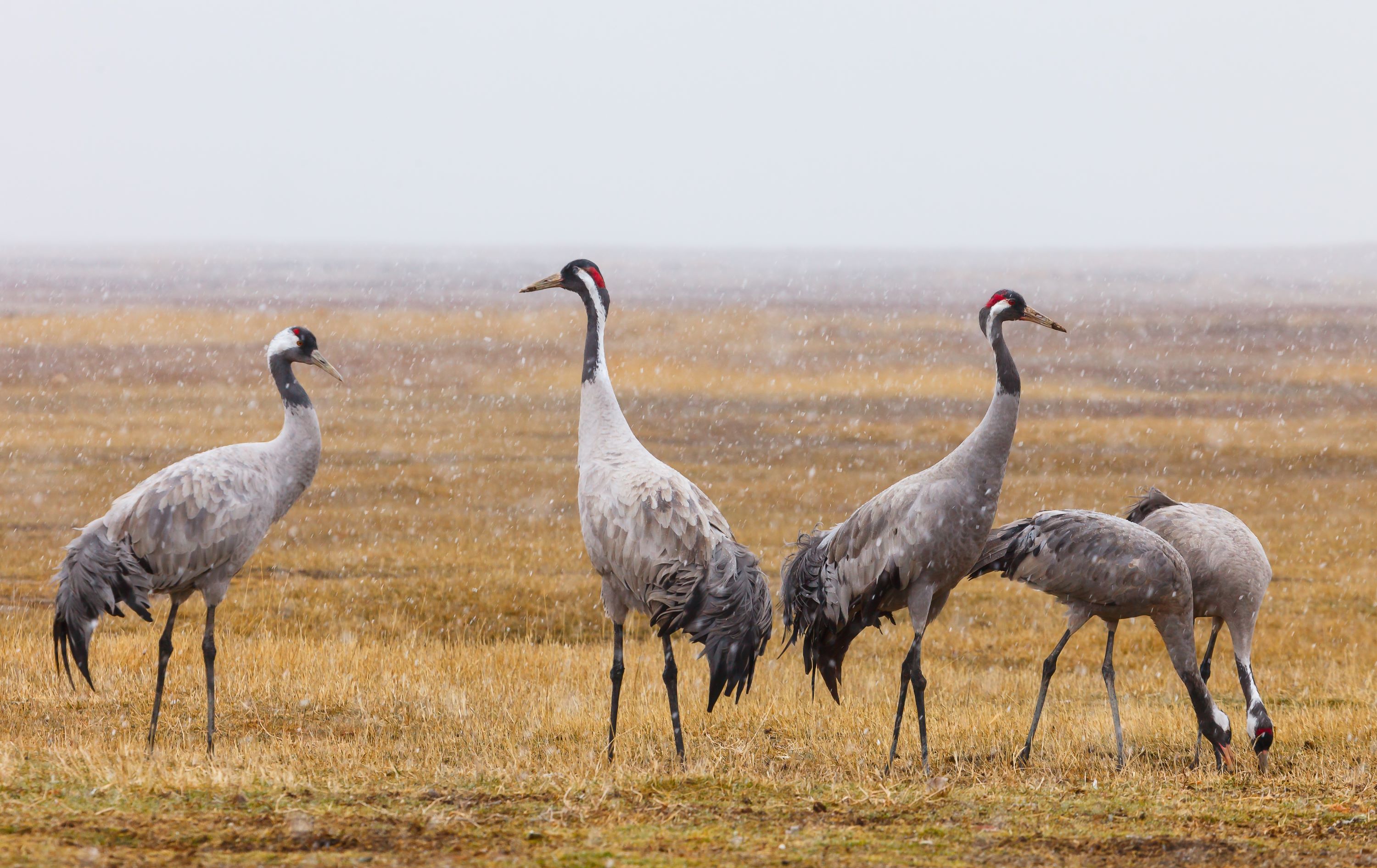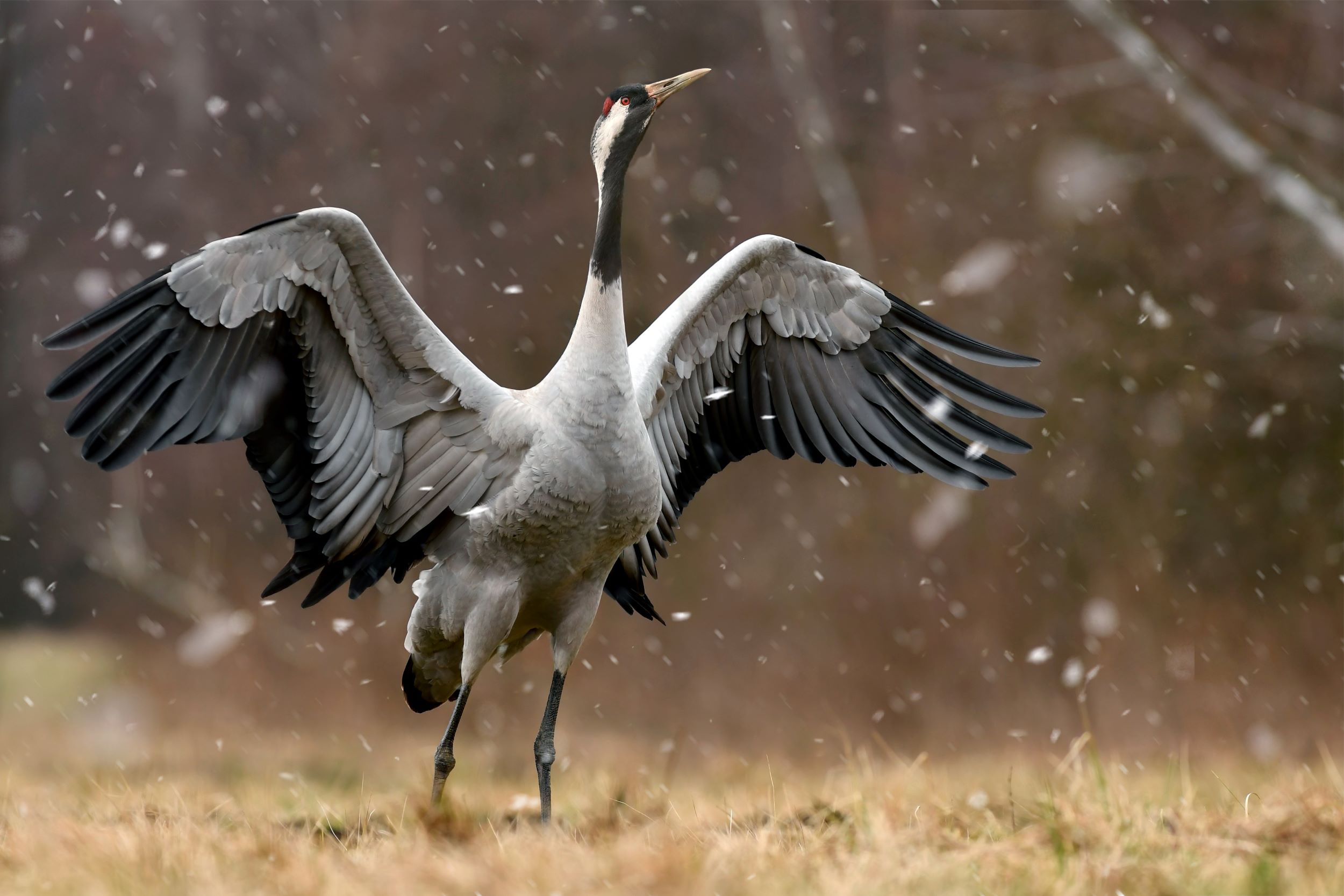
Common Cranes in Utah
The Common Crane, scientifically known as Grus grus, is a large, charismatic bird that belongs to the family Gruidae. It is widely distributed across Europe and Asia, making it a familiar sight in many parts of these continents. Adult Common Cranes are notable for their striking appearance: they possess a body length of about 100 to 130 cm (39-51 inches), a wingspan ranging from 180 to 240 cm (71-94 inches), and weigh between 4 to 6 kg (8.8-13.2 lbs). They have a primarily grey plumage, which can appear almost silver in certain light. A distinct feature of the Common Crane is its black neck and head, contrasted by a striking white stripe that extends from the eyes to the upper back. The red crown patch is another prominent characteristic, adding to their distinguished appearance.
Common Cranes are known for their complex and engaging social behaviors, especially during the breeding season. They form lifelong pair bonds and are renowned for their elaborate courtship dances, which involve a series of coordinated steps, jumps, and calls. This dance not only strengthens pair bonds but also helps in establishing and maintaining territories. The cranes nest in wetlands and marshes, where the tall vegetation offers protection and seclusion. Typically, they lay two eggs, and both parents share the responsibility of incubation and raising the chicks. The nurturing of the young is a vital part of crane family life, with fledglings staying with their parents until the subsequent breeding season.

Migratory in nature, Common Cranes undertake long journeys between their breeding grounds in northern regions and wintering areas in southern Europe, North Africa, and South Asia. These migrations are awe-inspiring, with cranes flying in large flocks, forming a distinctive 'V' shape in the sky. Their loud, trumpeting calls, often heard during flight, add to the spectacle of their migration. Conservation efforts across their migratory routes have been crucial in ensuring the survival and growth of crane populations, as these birds face threats from habitat loss and degradation.
The diet of the Common Crane is varied and includes a mix of plant and animal matter. They feed on grains, seeds, roots, insects, small mammals, and amphibians. Their foraging behavior is fascinating, as they can be seen probing the soil with their long beaks in search of food. This adaptability in diet has helped them survive in diverse habitats, ranging from agricultural lands to wetlands.
The sighting of Common Cranes in North America, particularly in Utah, is a rare and exciting occurrence for bird enthusiasts. In 2017, a remarkable event took place when a Common Crane was spotted at Green River in Grand County, Utah. This sighting was significant as it indicated either a rare vagrancy event or perhaps a range expansion. Such occurrences are thrilling for the birding community and highlight the importance of citizen science and birdwatching in contributing to our understanding of bird migration and distribution patterns. The Utah sighting in 2017, documented by the Utah birding community, provides valuable data for ornithologists and conservationists, helping to shed light on the behavior and movements of these majestic birds beyond their typical range. It underscores the dynamic nature of bird migration and the ongoing surprises that await in the field of birdwatching.